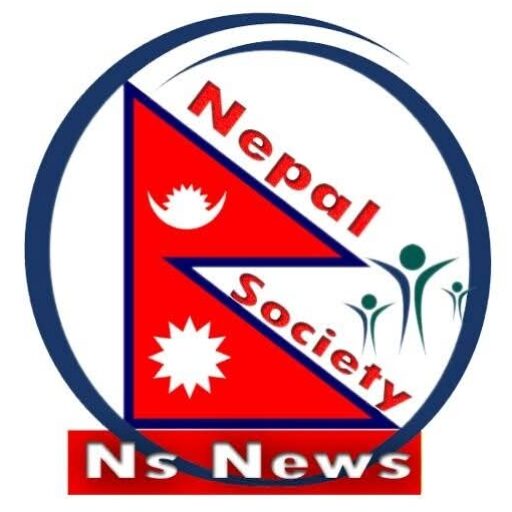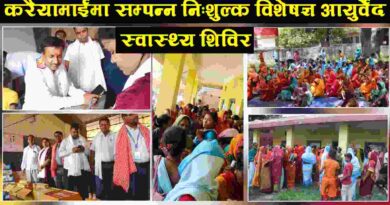नेपालमा स्वास्थ्य तथा अस्पतालको इतिहास
नेपालमा स्वास्थ्य तथा अस्पतालको इतिहास – नेपालको स्वास्थ्य यात्रा यसको भौगोलिक विविधता, सांस्कृतिक धरोहर र राजनीतिक परिवर्तनसँग गहिरो सम्बन्धित छ। प्राचीन समयमा आयुर्वेदमा आधारित स्वास्थ्य सेवाबाट सुरू भएर हालका वर्षहरूमा आधुनिक अस्पताल र स्वास्थ्य संस्थाको विकासले नेपालमा स्वास्थ्य क्षेत्रमा ठूलो फड्को मारेको छ। यो लेखले नेपालमा स्वास्थ्य सेवा तथा अस्पतालहरूको इतिहास, प्रमुख उपलब्धि, चुनौती र परिवर्तनहरू समेट्ने प्रयास गर्दछ।
Nepal’s journey in healthcare reflects its unique geography, cultural heritage, and evolving political systems. From Ayurveda-based practices in ancient times to the expansion of modern hospitals and health institutions in recent decades, Nepal’s health system has come a long way. This article presents a comprehensive history of health services and hospitals in Nepal, including major milestones, challenges, and achievements.
परम्परागत चिकित्सा र प्रारम्भिक स्वास्थ्य अभ्यास (Traditional Medicine and Early Health Practices)
प्राचीन नेपालमा स्वास्थ्य सेवा आयुर्वेद, जडीबुटी र धार्मिक उपचार प्रणालीमा आधारित थियो। वैद्यहरूलाई सम्मानजनक दर्जा दिइन्थ्यो जसले जडीबुटी, पूजापाठ र ज्योतिष शास्त्रको माध्यमबाट रोग उपचार गर्थे। वैदिक परम्पराले मन्दिरहरूलाई पनि उपचारस्थल बनाएको पाइन्छ। दशकौंसम्म गाउँघरमा घरेलु उपचार र स्थानिय वैद्यप्रति नै जनताको भरोसा रह्यो।
In ancient Nepal, healthcare was rooted in Ayurveda, herbal medicine, and spiritual healing. Baidhyas (traditional healers) were respected figures who used herbs, rituals, and astrology for treatment. The Vedic influence and religious beliefs made temples central places for healing. For centuries, communities relied on local healers and family-based remedies.
राणा शासन (१८४६–१९५१): औपचारिक स्वास्थ्य सेवाको सुरुआत (Rana Period (1846–1951): The Beginning of Formal Healthcare)
राणा शासनकालमा नेपालमा पश्चिमी चिकित्सा प्रणाली प्रवेश गर्न थाल्यो। वि.सं. १९४७ (सन् १८९०) मा बीर शमशेरले बीर अस्पताल स्थापना गरे जसलाई नेपालकै पहिलो आधुनिक अस्पताल मानिन्छ। सुरुमा यो अस्पताल राणा परिवार र सेनाका लागि मात्र खुला थियो। पछि सर्वसाधारणका लागि पनि खुला गरियो। त्यतिबेला विदेशी चिकित्सक र भारतीय डाक्टरहरूले प्रमुख भूमिका खेले। तर, सेवा सीमित र काठमाडौं केन्द्रित मात्र थियो।
During the Rana regime, western medicine began to enter Nepal. The first modern hospital, Bir Hospital, was established in 1890 AD (1947 BS) by Prime Minister Bir Shumsher. Initially, it served the Rana elites and the army, but later expanded to the public. Foreign doctors and Indian physicians played key roles. However, access was limited, and healthcare remained centralized in Kathmandu.
राणा पश्चातको युग र स्वास्थ्य विस्तार (१९५१–१९९०) – Post-Rana Era and Public Health Expansion (1951–1990)
२००७ सालको प्रजातान्त्रिक आन्दोलनपछि नेपाल सरकारले स्वास्थ्यलाई प्राथमिकतामा राख्यो। स्वास्थ्य मन्त्रालय स्थापना गरियो। स्वास्थ्य चौकी र जिल्ला अस्पतालहरू विस्तार गरिए। WHO, UNICEF, USAID जस्ता अन्तर्राष्ट्रिय निकायले मलेरिया नियन्त्रण, क्षयरोग, बाल तथा मातृ स्वास्थ्यमा सहकार्य सुरु गरे। १९७० र ८० को दशकमा प्राथमिक स्वास्थ्य सेवा (PHC) को अवधारणा गाउँगाउँमा विस्तार भयो।
After the 1951 democratic movement, health became a state priority. Ministry of Health was established. Health posts and district hospitals were gradually set up. International organizations like WHO, UNICEF, and USAID started supporting Nepal’s health programs, focusing on malaria control, tuberculosis, child and maternal health. The 1970s and 1980s saw the spread of Primary Health Care (PHC) concepts and expansion into rural areas.
स्वास्थ्य नीति तथा संस्थागत विकास (१९९०–२००६) – Health Policies and Institutions (1990–2006)
२०४६ को परिवर्तनपछि नेपालमा उदार स्वास्थ्य नीति अपनाइयो। निजी अस्पतालहरू र मेडिकल कलेजहरू खोल्न प्रोत्साहन दिइयो। टिचिङ अस्पताल, पाटन अस्पताल लगायतका संस्थाहरूले गुणस्तरीय सेवा दिन थाले। १९९१ को राष्ट्रिय स्वास्थ्य नीतिले ग्रामीण स्वास्थ्य र विकेन्द्रीकरणमा जोड दियो। खोप तथा परिवार नियोजन कार्यक्रमको व्यापक विस्तार भयो। तर, पूर्वाधार, जनशक्ति र सहर-गाउँको असमानता अझै चुनौतीका रूपमा रहिरह्यो।
After 1990’s political changes, Nepal adopted liberal policies and encouraged private hospitals and medical colleges. Teaching Hospital, Patan Hospital, and regional hospitals improved services. The National Health Policy 1991 prioritized rural health and decentralization. Immunization and family planning campaigns grew. But challenges remained: lack of infrastructure, skilled manpower, and growing urban-rural disparity.
द्वन्द्वकालीन स्वास्थ्य अवस्था (१९९६–२००६) – Health During Conflict (1996–2006)
माओवादी द्वन्द्वले ग्रामीण क्षेत्रमा स्वास्थ्य सेवामा ठूलो असर पार्यो। कैयौं स्वास्थ्य चौकीहरू नष्ट भए, कर्मचारीहरू विस्थापित भए। सेवा अवरुद्ध भयो। केही गैरसरकारी संस्था अझै दुर्गम क्षेत्रमा सक्रिय रहे। यसले सामुदायिक स्वास्थ्य प्रणालीको आवश्यकता र महत्त्व उजागर गर्यो।
The Maoist insurgency impacted health services, especially in rural Nepal. Many health posts were destroyed or abandoned. Health workers were displaced, and essential services disrupted. However, some NGOs continued working in remote areas. The conflict highlighted the importance of resilient community-based health systems.
संघीयता र स्वास्थ्य पुनर्संरचना (२०७२ पछिको युग) – Federalism and Health System Restructuring (Post-2015) – नेपालमा स्वास्थ्य तथा अस्पतालको इतिहास
२०७२ को संविधानपछि स्वास्थ्यलाई मूलभूत हकको रूपमा सुनिश्चित गरियो। संघीय संरचना अन्तर्गत स्वास्थ्य सेवा संघ, प्रदेश, र स्थानीय तहबीच बाँडफाँट गरियो। यसले स्थानीय स्वास्थ्य योजना, सेवा विस्तार र पहुँच सुधार गर्न मद्दत गर्यो। स्वास्थ्य बीमा बोर्ड र सामाजिक सुरक्षा कोष जस्ता प्रणाली लागू गरिए।
After the new Constitution of 2015, health was made a fundamental right. Nepal adopted a federal system, and health responsibilities were shared among federal, provincial, and local governments. This allowed more localized health planning and expansion of services at the grassroots level. Health Insurance Board and Social Security Fund were introduced to improve affordability and access.
कोभिड-१९ महामारी र डिजिटल स्वास्थ्यको विकास – COVID-19 Pandemic and Digital Health
कोभिड-१९ महामारी (२०२०–२०२२) ले नेपाललाई ठूलो स्वास्थ्य संकटमा पारेको थियो। अक्सिजन, आईसीयू बेड, खोप, र जनशक्ति अभाव भयो। तर, यसले टेलिमेडिसिन, इ-रिपोर्टिङ, मोबाइल एप जस्ता डिजिटल स्वास्थ्य उपकरणको प्रयोगलाई गति दियो। स्थानीय सरकारहरू परीक्षण, जनचेतना र खोप व्यवस्थापनमा अग्रसर रहे।
The COVID-19 pandemic (2020–2022) posed a major health crisis. Nepal faced shortages of oxygen, ICU beds, vaccines, and health workers. Yet, it also accelerated digital health tools like telemedicine, e-reporting, and mobile health apps. Local governments played vital roles in testing, awareness, and vaccine distribution.
वर्तमान अवस्था र चुनौतीहरू – Current Status and Challenges (नेपालमा स्वास्थ्य तथा अस्पतालको इतिहास)
हाल नेपालमा १२५ भन्दा बढी सरकारी अस्पतालहरू, ५००० भन्दा बढी स्वास्थ्य संस्था छन्। निजी क्षेत्रको सहभागिता बढ्दैछ। मलेरिया, पोलियोजस्ता रोग नियन्त्रणमा छन्। तर, दीर्घरोग, जनशक्ति पलायन, दुर्गम सेवा अभाव मुख्य चुनौती बनेका छन्। पूर्वाधार, तालिम, प्रविधिमा लगानी अत्यावश्यक छ।
Today, Nepal has over 125 government hospitals, over 5,000 health posts, and growing private sector involvement. Diseases like malaria and polio are nearly eradicated. But challenges persist: rising non-communicable diseases, health worker migration, and poor service in remote areas. Investment in infrastructure, training, and technology remains crucial.
निष्कर्ष (नेपालमा स्वास्थ्य तथा अस्पतालको इतिहास)
Nepal’s health system has witnessed a remarkable transformation—from ancient Baidhyas to AI-powered diagnostics. Despite difficulties, continuous reforms, community involvement, and international partnerships are making health services more inclusive and modern. A healthier Nepal is within reach if we invest wisely and ensure equal access for all.
नेपालको स्वास्थ्य प्रणालीले वैद्यहरूको युगदेखि लिएर कृत्रिम बुद्धिमत्तासम्मको लामो यात्रा तय गरेको छ। समस्याहरूका बाबजुद, सुधारहरू, सामुदायिक भागीदारी र अन्तर्राष्ट्रिय सहयोगले सेवा विस्तारमा टेवा पुर्याएका छन्। सबैका लागि समान र गुणस्तरीय स्वास्थ्य सेवा सुनिश्चित गर्न सकिएमा स्वस्थ नेपालको सपना पुरा गर्न सकिन्छ।



Pingback: नेपालको राजनीतिक इतिहास: राजतन्त्रदेखि संघीय गणतन्त्रसम्म